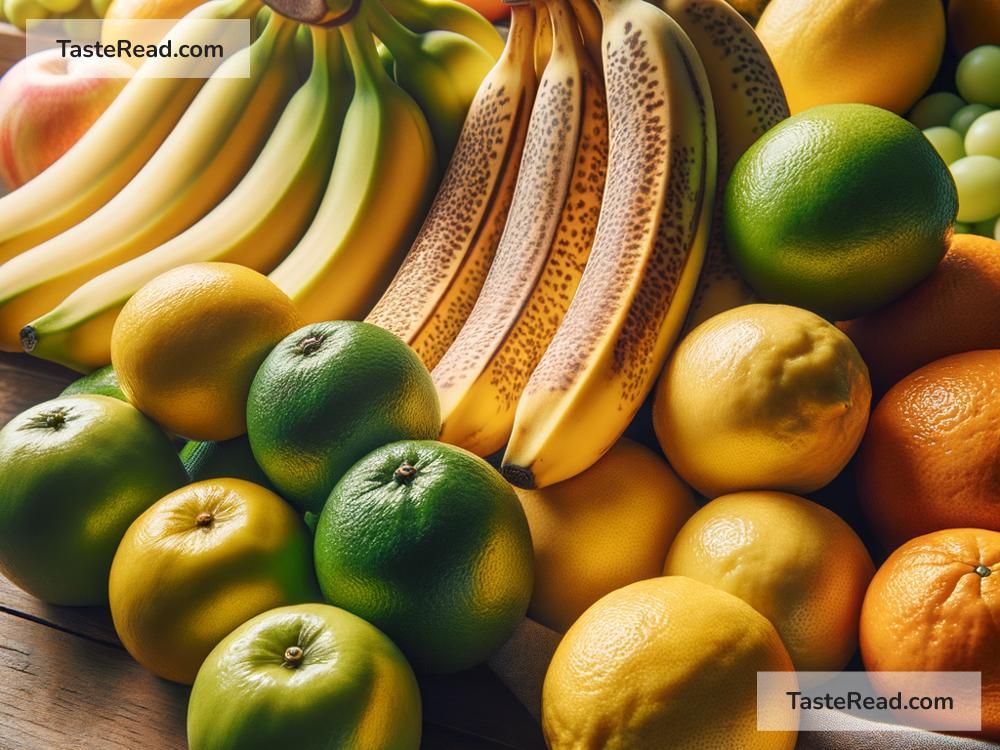How the Ripening Process Alters Acidity in Fruits
Have you ever bitten into an unripe fruit and noticed how sour it tastes? Then, when the same fruit ripens, it becomes deliciously sweet. This is no coincidence—fruit ripening is a fascinating process that involves many changes, including a shift in acidity levels. In this blog, we’ll explore how the acidity in fruits changes as they ripen and why this process is essential for fruit’s taste, texture, and appeal.
What is Acidity in Fruits?
Before we dive into the details, let’s first understand what acidity means. Acidity in fruits refers to the amount of natural acids present. These acids, such as citric acid, malic acid, and tartaric acid, are responsible for the tart or sour taste. For example, lemons and limes are loaded with citric acid, which is why they taste so tangy.
Acidity in fruits is measured on the pH scale. A low pH (below 7) means the fruit is high in acid and tastes sour, while a higher pH (closer to 7 or above) indicates lower acidity and a sweeter flavor. Unripe fruits typically have higher levels of acidity, making them taste sharper and less enjoyable to eat.
The Ripening Process
Ripening is the natural process fruits go through to transition from immature and sour to mature and flavorful. This transformation is crucial because it makes fruits more appealing to animals and humans who eat them, helping the plant spread its seeds.
Several factors are involved in ripening, including changes in color, texture, sugar levels, and acidity. But one of the most noticeable changes is the shift from sourness to sweetness, which is directly tied to acidity levels.
How Does Ripening Change Acidity?
During ripening, fruits undergo chemical and biological changes that reduce their acidity while increasing their sugar content. Here’s how it happens:
-
Breakdown of Acids:
In unripe fruits, the concentration of natural acids is high, contributing to the sour taste. However, as fruits ripen, these acids break down. They are converted into less acidic compounds or used by the fruit’s cells for energy. This reduction in acid levels makes the fruit taste less tangy and sour. For example, think about a green banana. When it’s unripe, it tastes far more sour compared to when it turns yellow and sweet. -
Increase in Sugar:
Another key change during ripening is the buildup of sugar. Fruits produce sugar from starch stored in their cells. Enzymes break down the starch and release glucose, fructose, and sucrose—types of sugars. These sugars mask the remaining acidity, giving the fruit its sweeter flavor. -
Change in pH Levels:
As acids decrease and sugars increase, the overall pH level of the fruit rises. A higher pH means the fruit becomes less acidic and more balanced in flavor. This shift in pH is why ripe fruits like peaches or berries taste sweeter and less sharp compared to their unripe forms.
Examples of Acid Reduction in Common Fruits
Different fruits show varying degrees of acidity changes as they ripen. Let’s take a look at a few examples:
-
Tomatoes:
Unripe green tomatoes are highly acidic, giving them a tart flavor. Once they ripen into their juicy red form, their acidity levels drop, making them taste mildly sweet with a tangy edge. -
Apples:
Many apple varieties are sour when they’re not fully ripe. As they mature, acidity decreases and sugars increase, resulting in that crisp and refreshing sweetness. -
Citrus Fruits:
Citrus fruits like oranges and tangerines also lose some of their sharpness with ripening. While they retain a bit of tanginess, their sugar balances out the acid, making them sweeter and more enjoyable.
Why Does Acidity Change During Ripening?
The reduction in acidity is not random—it serves an important purpose for plants. Fruits rely on animals and humans to eat them and spread their seeds. By making themselves sweeter and tastier through reduced acidity and increased sugar, ripe fruits attract more animals. After eating the fruit, animals disperse the seeds through their waste, ensuring the plant’s continued growth and reproduction.
From an evolutionary standpoint, this shift is a clever strategy that benefits both the plant and the animals that consume the fruit. For humans, it’s a win-win—we get to enjoy ripe, delicious fruits while unknowingly playing a role in seed dispersal.
How Acidity Affects Fruit Uses
The acidity level of fruit can also affect how it’s used in cooking, baking, or preserving. Higher acidity in unripe fruits makes them ideal for pickling, chutneys, or adding a tangy flavor to recipes. On the other hand, ripe fruits with lower acidity are preferred for jams, desserts, and fresh consumption. For example, an unripe mango is perfect for savory dishes like mango salsa, while a ripe mango shines in sweet smoothies or ice cream.
Conclusion
The ripening process is a marvel of nature that transforms fruits from sour and acidic to sweet and flavorful. By breaking down acids and increasing sugar levels, fruits change their taste, texture, and appeal, making them an irresistible treat for our taste buds.
So, the next time you enjoy a ripe apple, banana, or tomato, take a moment to appreciate the complex changes that made it so tasty. Ripening is not just a chemical process—it’s nature working its magic to create fruits that both humans and animals can’t resist!


